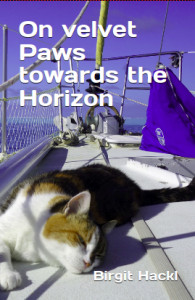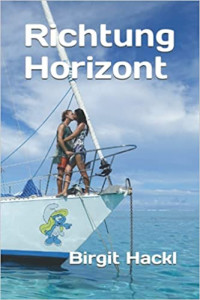It’s our third visit to Raivavae, but this year we’re lucky with the weather for the first time–sunny skies make such a difference…
We’ve been dividing our time between writing/boat projects and fun activities with our cruiser friends. Three days ago we hiked up Mt. Hiro, the highest mountain, together: 8 cruisers in a row ![]()
To get to the path we had to cross a private garden. Instead of complaining about us trespassing the friendly local couple had a bag of lychees, a few stacks of bananas and some taro prepared for us when we got back down after a fabulous hike with breathtaking views.
We hear reports from Tahiti and Moorea that thefts and vandalism are becoming more frequent. It seems that some sections of the population are getting fed up with the numerous sailboats.
Here sailboats are still rare and each time we get off the boat we have some pleasant encounter. Yesterday we took the dinghy ashore where our friends from Avatar where just getting ready for a bike tour around the island. They discovered a flat tyre and a local girl who had been watching the scene immediately returned with her bike to lend it to them… Today we went to a little minimarket, asked whether they had bread and were told that they were sold out. We bought a few other items and just as we were leaving the shop the salesgirl handed us a baguette–she had taken one from the family freezer and wouldn’t let us pay for it.
These little, spontaneous gestures make life so pleasant on remote Polynesian islands…








